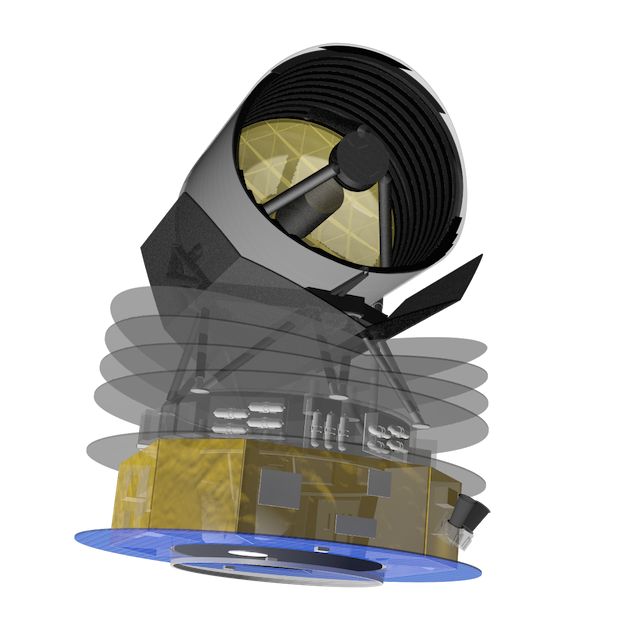The space agencies ESA and JAXA have decided to take SPICA, the joint European-Japanese infrared space telescope, out of the competition for ESA’s fifth medium class mission (M5). SPICA was one of the three candidates for the M5 mission, which is part of ESA’s Cosmic Vision program. Although a last review has shown that the mission is technically feasible, the two agencies decided that the costs were going to be too high to continue with the project.
Since SPICA made it to the last M5 selection round around two years ago, out of more than 30 contenders, the SRON-led SPICA consortium has been further developing the mission concept. SPICA was aimed at the study of galaxy evolution and star-formation over cosmic time, looking back in time for as far as ten billion years. Astronomers also intended to use SPICA to study the conditions for the birth of planetary systems like our own solar system. The best way to do this is to study the universe in infrared light because infrared radiation travels freely through space dust where for example visible light is blocked.
three instruments
SPICA was going to carry three instruments. A European consortium led by SRON has been developing the far-infrared spectrometer SAFARI. Japan has been developing a mid-infrared camera and spectrometer, and a French led European collaboration developed a far-infrared camera and polarimeter.
The two remaining candidates for M5 are now the EnVision mission to Venus and the Transient High-Energy Sky and Early Universe Surveyor (THESEUS). The M5 mission has a planned launch date in 2032.



